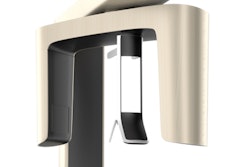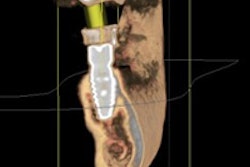
Change is inevitable, even in dentistry. Today's dental landscape is being influenced and shaped by the integration of CAD/CAM and cone-beam CT (CBCT) imaging in the practice. These new and advanced 3D digital technologies can provide significant advantages to the practitioner and deliver better care to our patients.
 Scott Pope, DDS.
Scott Pope, DDS.Cone-beam CT 3D imaging has given our office a distinct advantage over other dental practices in terms of diagnosis and treatment planning. The value of being able to evaluate and diagnose failing root canals, infections, fractured roots, sinus problems, temporomandibular joint (TMJ) bone degeneration, cysts, supernumerary teeth, third molars, and more has given our practice a new sense of awareness for better patient care.
Six years ago, I purchased a Cerec 3D camera (Sirona) with the initial goal of delivering single-visit dentistry to my patients. As my staff and I became more proficient with the technology, we've been using it for multiple posterior restorations, anterior crowns, veneers, smile makeovers, three-unit bridges, implant custom abutments, and screw-retained implant crowns. We have even completed a full-arch restorative case, consisting of 14 e.max crowns in a single six-hour visit.
Implant placement
With the successful integration of CAD/CAM into my practice, my next goal was to undertake more implant placement.
CBCT imaging is becoming the standard of care in regard to implant placement. With 1:1 magnification and image accuracy, we all understand the importance of knowing the following:
“Cone-beam CT 3D imaging has given our office a distinct advantage over other dental practices in terms of diagnosis and treatment planning.”
- Amount of bone present
- Critical landmarks
- Proximity to the sinus or inferior alveolar canal
- Lingual curvature of the mandible so the sublingual space isn't perforated
CBCT imaging allows the clinician the ability to virtually place an implant, or multiple implants, in the most ideal position within the bone. Having the ability to integrate CAD/CAM data into the CBCT imaging adds to this benefit. For example, instead of designing the implant restoration after the implant has been placed, we have the capability to design the restoration first and then determine the best position for the implant. With this "crown-down" type of implant planning, we are able to create better implant aesthetics and tissue management.
I can also digitally create an implant surgical guide that can either be electronically sent out to a lab for fabrication or milled directly on my equipment. Surgical guides make the surgery safer, more predictable, and more efficient, with reduced postoperative complications and discomfort for the patient.
Most CBCT units have viewing software installed, eliminating the need for the images to be uploaded into a DICOM file and transferred to another viewer program. With the Galileos CBCT system (Sirona), I do not need to have the patient return for a second appointment, saving valuable time and making the most of the opportunity with the patient. As I explain the benefits of the treatment to the patient, I can virtually place implants, discuss bone grafting, or a needed sinus lift, among other treatments, which creates a high level of trust and confidence with our patients and a high acceptance of treatment in my experience.
Sleep apnea
For patients who have a constricted airway and sleep apnea, we soon will be able to use the SICAT Air software (Sirona) to highlight constrictions in the airway and determine an effective jaw position that opens up the airway. This software will allow me to evaluate the patient's airway and measure airway volume. With this information, we can digitally send out to have an oral appliance fabricated that should be effective without the need for multiple titration appointments afterward.
When you begin to adopt this technology, it is most important to consider how each technology can work together within your practice. Having systems that can actually work together has a synergistic effect. To explain this concept, imagine buying a PC with certain software and a Mac with different software and then wanting them to work harmoniously. When software and hardware can talk to each other the effect is to potentiate the power that systems can achieve. When systems cannot share information, then some value is lost, and the user may find it difficult to reach the full potential of the technologies. When evaluating systems, keep in mind when you buy one brand of CBCT, another brand of a CAD/CAM system, and another brand of management software, you may find it is awkward to get the equipment to share information.
Scott Pope, DDS, is in private practice in Walnut Creek, CA. He can be reached at his website, popedental.com.
The comments and observations expressed herein do not necessarily reflect the opinions of DrBicuspid.com, nor should they be construed as an endorsement or admonishment of any particular idea, vendor, or organization.



















